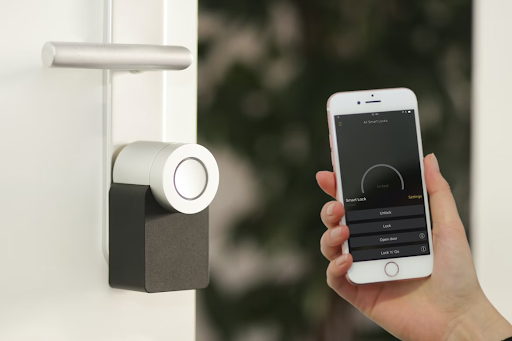IoT Opportunities in Insurance

https://unsplash.com/photos/5fNmWej4tAA
Technologies change everything: the way we work, keep track of our health, make decisions, and even protect ourselves from accidents. IoT software development companies make it possible for us to enjoy new experiences connected to IoT devices. We have smart cities, smart healthcare devices, smart sensors for large manufacturers, and many other IoT-enabled technologies. What’s next?
Apparently, it’s clear that the potential of IoT hasn’t been investigated to its fullest yet. A lot of new products and business ideas emerge on the market literally every day. Today, we are going to talk about the sphere where IoT seems out of place – the insurance sector.
But first, let’s clarify what the IoT is!
What exactly is IoT and how do IoT-enabled technologies make our lives easier?
IoT or, in other words, the Internet of Things, is a concept of gathering data on surrounding conditions, people’s conditions, and equipment conditions with the help of sensors (or any other IoT devices). These sensors usually send the data they gather from the surroundings to the processing or storage centers. On the basis of this data (which is usually analyzed by complex algorithms to get rid of meaningless information), critical decisions are often made.
Since the concept was introduced in 1999, our lives have significantly changed in multiple spheres: logistics, healthcare, housing, and so on. It wasn’t obvious that years later, the idea of an RFID chip embedded inside a product would find one of its manifestations in, say, healthcare sensors for heart rate monitoring.
The reality is that small gadgets, or IoT devices, can be capable of:
- gathering huge amounts of critical data about your health
- helping to monitor and even control your house
- monitoring the conditions of huge industrial machines
It won’t be a mistake to say that the IoT helped us understand and monitor our environment better by opening a new way of collecting information quickly, continuously, and effortlessly from the human side.
Sometimes, the application of IoT devices is discovered in industries you haven’t even thought of. For example, insurance. The Internet of things is even here already. Let’s talk more about this.
IoT for insurance: upgraded services thanks to IoT devices
 https://unsplash.com/photos/IJkSskfEqrM
https://unsplash.com/photos/IJkSskfEqrM
The Internet of Things in the insurance field is mostly used to reduce the number of insurance cases. In this respect, insurance companies can open up new ways of protecting people’s personal property, real estate, and even lives.
There are a few examples of IoT-driven insurance services:
Safer property conditions. IoT devices can serve as an additional means of home security. There are various situations to come with, starting from robbery and down to fire. IoT sensors used in houses can help to track the situation inside your house or apartment. For example, they can check temperature levels and alert you not at the moment when the fire starts, but keep tabs on gradually rising temperatures in the most dangerous zones, such as the kitchen, and notify you of possible accidents. In the same way, movement sensors can monitor suspicious activity inside the house when no one’s there. Sensors will send data to the data processing center and then activate security systems.
Accident prediction and prevention. This can mostly relate to the proper work of some equipment that is used in public establishments, by manufacturers, and in locations. IoT sensors will meticulously gather data on equipment conditions and then notify insurance companies or site managers of possible issues with their performance. This would help to avoid any costly damages and, sometimes, even save employees’ lives.
Advanced healthcare for the elderly. Insurance companies can offer the adoption of healthcare IoT devices to elderly people to monitor their health conditions and react quickly in the event of their health deterioration. This is beneficial for both parties: elderly people will get help in a timely manner as their conditions are meticulously monitored, and insurance companies will prevent cost loss.
Better car accident investigation. IoT sensors placed in different parts of a car can contribute to the better investigation of accidents on the road. The police, using information from sensors to study a car’s condition or a driver’s behavior, can identify a guilty party much quicker than usual. With IoT sensors, the investigation can be accelerated and more precise. After this, it would be easier for an insurance company to decide on the insurance payment.
However, despite all the benefits enumerated above, the picture is not as great as it seems at first glance. Let’s look closer at all the pros and cons of bringing IoT solutions to the insurance sector.
Ways IoT impacts insurance: pros and cons
 https://unsplash.com/photos/376KN_ISplE
https://unsplash.com/photos/376KN_ISplE
IoT technology can transform the way the insurance sector works. Luckily, this mainly implies advantages to the overall work of insurance companies, such as:
Smart cost management. IoT devices are a great source of data, which insurance companies can use to set up new revenue channels. As an example, they can provide their customers with additional information on the condition of their vehicles and offer maintenance in one of their partnership spots. A partnership with a car repair company can bring additional revenue.
Improved risk assessment. Insurance companies can assess their clients’ behavioral patterns (as for vehicles or places of residence) with the help of IoT sensors and react to possible issues or risks more quickly and efficiently.
Decreased loss rates. With all the information on hand, meticulously assessed risks, and an algorithm of actions targeted at preventing any possible insurance cases, insurance companies will be able to significantly lower the rate of losses they currently undergo.
IoT has indeed brought a lot of improvements to multiple domains. However, nothing can serve exclusively for someone’s benefit. IoT devices require additional control over their technical condition and are vulnerable in case of cyberattacks.
Placing IoT sensors in cars, houses, and even on ourselves, puts us in cybersecurity danger. Sensors will collect private information about people’s movements, health conditions, and house conditions, and send it to the storage center via the internet. Taking advantage of this weak spot is a tempting goal for hackers.
With the implementation of IoT sensors, insurance companies will have to prove to people that their data is reliably protected from breaches. For this, they will need to invest in a reliable IT support team and make sure their software meets all the necessary personal data protection requirements.
It’s clear that IoT technology in the insurance sector is not yet perfect. There are a lot of things to catch up on and a lot of new approaches to design and implement. That’s why, either when developing IoT-enabled solutions or ensuring data security and privacy for them, an insurance company should consider a partnership with an experienced software engineering company.
An experienced team of developers won’t only develop a high-quality solution, but they will also take on the role of consultants. A development team would scrutinize a company’s business idea and present some options for enhancing or changing it with more benefits for the company in mind, based on their knowledge background, and experience working with IoT solutions.
Conclusion
IoT seems to be industry-agnostic. It’s highly doubtful that we would have thought of its use in insurance back in 1999. However, the world changes faster than anything else. The cases we discussed in this article are not all that we can experience. There are lots and lots of other situations that make insurance companies significantly upgrade the services they provide.
Still, even with the current way of using IoT devices for different purposes, the benefits that this technology can bring to the insurance world are yet to be discovered to their fullest. Maybe, in the future, we will witness the situation with insurance cases reduced to a minimum.
This article has been published in accordance with Socialnomics’ disclosure policy.









